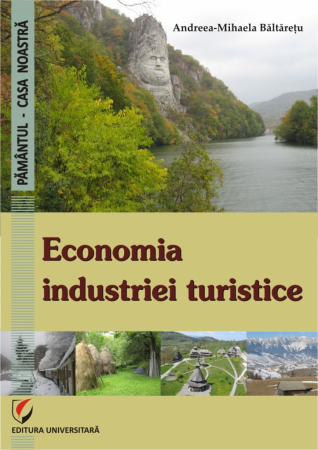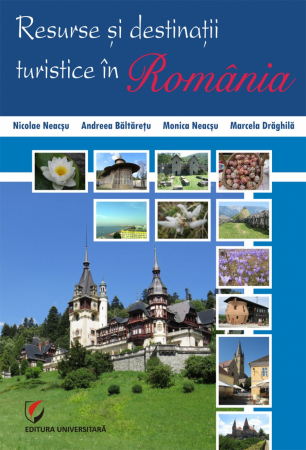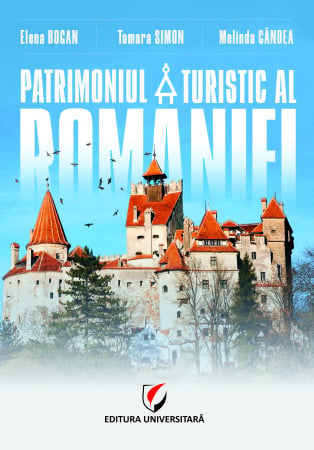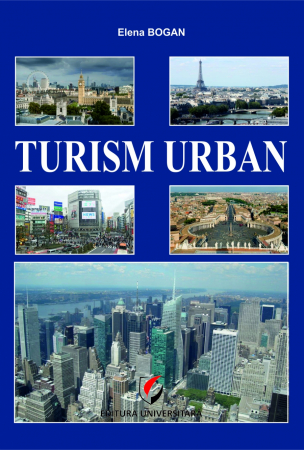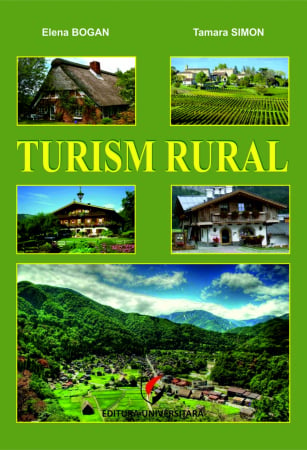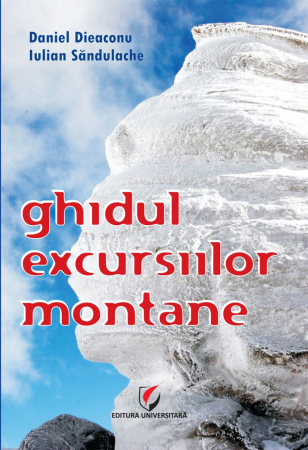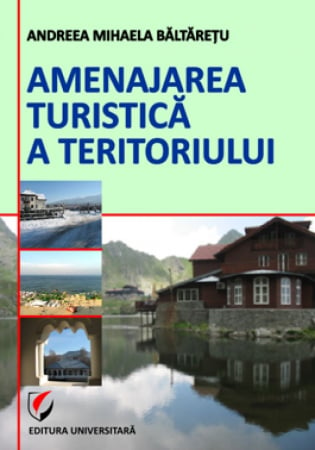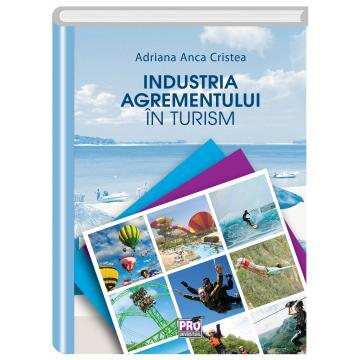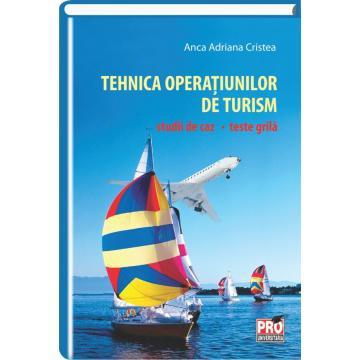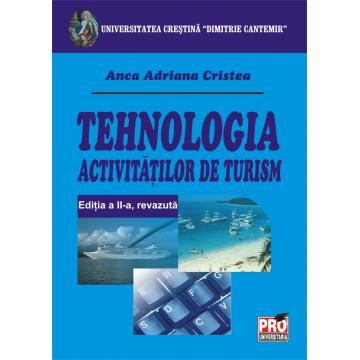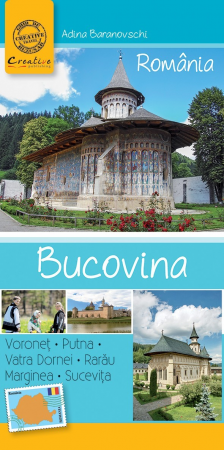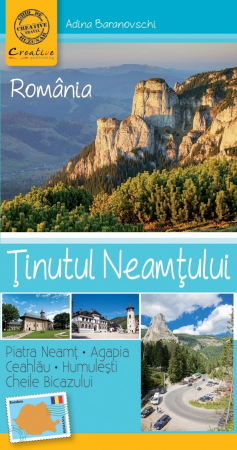ISBN: 978-606-591-371-4
DOI: 10.5682/9786065913714
Publisher year: 2012
Edition: I
Pages: 268
Publisher: Editura Universitară
Author: Elena Bogan, Tamara Simon, Melinda Candea
- Description
- Download (1)
- Authors
- Content
- More details
- Reviews (0)
Romania has, within the geographical area of the European continent, a central position - southeast, being located at approximately equal distances (2,900 km) from Lisbon - on the shores of the Atlantic Ocean; North Cape - advancing farthest north into the Atlantic Ocean and Ural Mountains; but only 1,050 km from the southern extremity of the continent - Cape Matapan.
The presence of the parallel of 45 ° northern latitude, associated with the situation of our country in Central Europe, with obvious south-eastern extension, clearly suggests the influence of this position on some physical-geographical components: climate - which by its peculiarities impresses nature and human activities. to them, a special structure and rhythm, facilitating the practice of a wide range of tourist activities; flora and fauna - which through the variety and richness of the elements ensures a favorable biogeographic environment for rest, hiking, hunting and sport fishing.
Romania's geographical position is complete and defined by the personality of the Carpathians, the Danube and the Black Sea. Through the Carpathians and the Danube, a closer connection is made with western and central Europe, and an open, intense and multidirectional collaboration system of the countries around the Black Sea can offer a complementary development to the one oriented only to the west or east of the continent.
The new connections through the river axis Rotterdam - Rhine - Main - Danube - Black Sea, as well as those in the marine perimeter, place Romania in a new geographical, geopolitical, economic and tourist position between Europe and Asia, with a nodal role in this new Eurasian dimensions.
In these conditions, Romania stands out as a country with a strong geographical personality, doubled by a special tourist vocation. On an area of only 238,391 km2, mountains, hills, plateaus and plains are harmoniously and balanced, which is an imposing architectural ensemble, which Nicolae Balcescu likened to a fortress-symbol of the Romanian people's resistance against all the vicissitudes of history. Thus, the relief - belonging to different categories of genetic types (volcanic, glacial, karst, wind, river, coastal, etc.) and structural - outlines the potential and specificity of the Romanian territory in terms of tourism.
The Danube Delta stands out for its landscape, morphohydrological and faunal originality, being unique in Europe both in terms of ecology and habitat in the deltaic environment, and from a tourist point of view it is one of the most representative and valuable tourist areas in the country, but and on a continental scale.
Through the relatively complex tourist potential, defined by the sea water and the beach, the thermomineral waters and the sapropelic mud of the therapeutic lakes, through the marine bioclimate, the cultural-historical and economic objectives with obvious tourist function, the Romanian Black Sea coast responds to a wide range of tourist motivations: rest, complex spa care, sports leisure, cultural entertainment, etc.
Romania's tourist vocation is obviously supported by the dense hydrographic network, the multitude of natural and anthropic lakes that generate landscapes with a strong personality, offering a wide field for various tourist activities: rest, spa treatment, water sports, sailing leisure, transport with tourist role, sport fishing, etc.
The presence of important athermal or thermal hydromineral resources, with a very varied palette from a chemical point of view, dry mofetic emanations, sapropelic or peat muds have placed Romania in the circuit of European and even world spa tourism, a good part of the curative resources having superior qualities. those offered by the famous resorts of Vichy, Karlovy-Vary, Baden-Baden, etc.
The ancient habitation of the territory, the uninterrupted presence of human activities generating material elements in space have led, in time, to the outlining of a highly appreciated anthropic tourist potential, belonging either to the sphere of material civilization elements (historical vestiges, art and architecture monuments, objectives historical and socio-cultural, etc.), or spiritual civilization (customs, folklore, religion, hospitality, community organization, etc.).
The tourist offer is completed by the specific technical-material base (accommodation and leisure base, treatment base, public alimentation, the tourist transport proper) and by the general infrastructure. Among the components of the general infrastructure, the most important for tourism is the communication network - recognized as a "structuring vector" in development, with direct beneficial effects in the development of tourism, which provides access to all resources and tourist structures. Romania has, as a whole, a good network of transport routes, which covers the national territory, but which must be modernized to cope with European traffic regulations.
Because potent
The tourist reason is part of the category of resources whose consumption can be achieved only "in situ" its involvement in the social and economic circuit of values is both a process of superior capitalization of existing potential and an important factor in economic development and organization of space . In time, a close correlation is made between the location of tourist resources and the development of tourism; between the variety of these resources and the forms of tourism practiced; between the size of the tourist phenomenon and the shaping of the tourist areas, respectively the prosperity of the local population.
Currently, it is more than necessary: arranging the existing tourist spaces by modernizing and expanding the reception base, diversifying it; the introduction in the tourist circuit of new areas with untapped potential; the development of rural tourism and agrotourism, as a new form of tourism related to the traditional activities of the population. Of particular importance is the corroboration of tourism development with the appropriate arrangement of general and tourist infrastructure; increasing the level of professional training, the behavior of tourism staff; imposing a quality level of the development of the tourist act.
The Authors
-
Patrimoniul turistic al României
Download
TAMARA SIMON
ELENA BOGAN
CHAPTER I. OPERATIONAL CONCEPTS. DEFINITIONS. PRINCIPLES / 13
1.1. Tourist patrimony, tourist potential, tourist resource, tourist offer, tourist fund / 13
1.2. Classification of the tourist potential / 18
1.3. Methodology for recognizing the tourist patrimony and establishing its tourist potential / 19
CHAPTER II. NATURAL TOURIST POTENTIAL / 22
2.1. The tourist potential of the relief / 24
2.1.1. The tourist potential of the mountain units / 25
2.1.1.1. The main types of relief with a special tourist function / 26
2.1.1.2. Tourist attractions specific to the mountain area / 40
2.1.2. The tourist potential of the hill and plateau units / 48
2.1.3. The tourist potential of the plains and meadows / 50
2.1.4. Danube Delta - biosphere reserve / 51
2.2. Climate-tourism potential / 57
2.2.1. Climate - tourist resource / 58
2.2.2. Types of bioclimate / 63
2.2.3. Climatotherapy / 66
2.3. The tourist potential of the waters / 69
2.3.1. The tourist potential of the flowing waters / 69
2.3.2. The tourist potential of the lakes / 71
2.3.3. Outbreaks / 76
2.4. The spa potential of Romania / 77
2.4.1. Mineral and thermal waters / 77
2.4.1.1. Mineral waters / 77
2.4.1.2. Thermal and thermomineral waters / 82
2.4.2. Therapeutic muds (peloids) / 83
2.4.3. Natural therapeutic gases (emanations of mophetic origin) / 84
2.4.4. Therapeutic salines / 85
2.5. The tourist potential of the Romanian Black Sea coast / 86
2.6. The tourist potential of the components of the biogeographical cover / 91
2.6.1. The vegetal cover and its role in the development of tourism / 91
2.6.2. The social-tourist function of the forest / 94
2.6.3. The tourist potential of the fauna / 96
2.6.4. Tourist potential of protected areas / 100
CHAPTER III. THE TOURIST POTENTIAL OF THE NATIONAL CULTURAL HERITAGE / 111
3.1. Theoretical considerations on the national cultural heritage / 112
3.2. General requirements for the evaluation of cultural goods for capitalization in tourism / 116
3.3. Types and categories of cultural heritage / 121
3.3.1. Intangible cultural heritage / 122
3.3.2. Mobile cultural heritage / 123
3.3.3. Real estate cultural heritage / 125
3.3.4. Natural and cultural landscapes / 131
3.4. Historical monuments, architectural ensembles, monuments and archeological sites in Romania / 133
3.4.1. Historical monuments and architectural ensembles / 133
3.4.2. Monuments and archeological sites / 140
3.5. Romanian monuments in the European and world patrimony / 142
3.6. Museum institutions and public collections / 154
3.7. Cultural-artistic institutions and manifestations / 160
3.8. The patrimony of ethnographic art and creation in popular Romania / 162
3.8.1. The structure of folk art and creation / 166
3.8.2. Folklore manifestations / 173
CHAPTER IV. TOURIST INFRASTRUCTURE / 176
4.1. The technical-material base of tourism / 176
4.1.1. Accommodation structures (accommodation base) and tourist accommodation / 177
4.1.2. Tourist food structures for tourism / 188
4.1.3. Tourist treatment structures (treatment base) / 190
4.1.4. Leisure structures (basis for leisure) / 193
4.2. Ways of communication / 198
4.2.1. General characteristics / 198
4.2.2. Means of transport used in tourism / 200
4.2.2.1. Railway tourism / 201
4.2.2.2. Road tourism / 204
4.2.2.3. Naval tourism / 206
4.2.2.4. Air tourism / 209
4.2.2.5. Special tourist transports / 211
4.3. Tourist traffic / 211
4.3.1. The characteristics of the tourist circulation / 211
4.3.2. Dynamics of the number of tourists in Romania / 212
4.3.3. International tourist flows to Romania / 217
4.3.4. Romanian tourist flows abroad / 219
4.4. Activity of travel agencies and tourist information centers / 221
4.4.1. The activity of travel agencies / 221
4.4.2. The activity of the tourist information centers / 223
CHAPTER V. ROMANIA-SPECIFIC TOURIST PRODUCTS AND THEIR PROMOTION PERSPECTIVES / 225
CHAPTER VI. MAJOR TYPES OF ENVIRONMENTAL IMPACT OF TOURISM / 235
6.1. The concept and categories of environmental support capacity / 239
6.1.1. The concept of support capacity for tourism / 239
6.1.2. Categories of tourism support capacity / 242
6.2. Factors of environmental degradation and tourist potential / 244
6.3. Application of the green tourism system / 249
ANNEXES / 254
BIBLIOGRAPHY / 259
The presence of the parallel of 45 ° northern latitude, associated with the situation of our country in Central Europe, with obvious south-eastern extension, clearly suggests the influence of this position on some physical-geographical components: climate - which by its peculiarities impresses nature and human activities. to them, a special structure and rhythm, facilitating the practice of a wide range of tourist activities; flora and fauna - which through the variety and richness of the elements ensures a favorable biogeographic environment for rest, hiking, hunting and sport fishing.
Romania's geographical position is complete and defined by the personality of the Carpathians, the Danube and the Black Sea. Through the Carpathians and the Danube, a closer connection is made with western and central Europe, and an open, intense and multidirectional collaboration system of the countries around the Black Sea can offer a complementary development to the one oriented only to the west or east of the continent.
The new connections through the river axis Rotterdam - Rhine - Main - Danube - Black Sea, as well as those in the marine perimeter, place Romania in a new geographical, geopolitical, economic and tourist position between Europe and Asia, with a nodal role in this new Eurasian dimensions.
In these conditions, Romania stands out as a country with a strong geographical personality, doubled by a special tourist vocation. On an area of only 238,391 km2, mountains, hills, plateaus and plains are harmoniously and balanced, which is an imposing architectural ensemble, which Nicolae Balcescu likened to a fortress-symbol of the Romanian people's resistance against all the vicissitudes of history. Thus, the relief - belonging to different categories of genetic types (volcanic, glacial, karst, wind, river, coastal, etc.) and structural - outlines the potential and specificity of the Romanian territory in terms of tourism.
The Danube Delta stands out for its landscape, morphohydrological and faunal originality, being unique in Europe both in terms of ecology and habitat in the deltaic environment, and from a tourist point of view it is one of the most representative and valuable tourist areas in the country, but and on a continental scale.
Through the relatively complex tourist potential, defined by the sea water and the beach, the thermomineral waters and the sapropelic mud of the therapeutic lakes, through the marine bioclimate, the cultural-historical and economic objectives with obvious tourist function, the Romanian Black Sea coast responds to a wide range of tourist motivations: rest, complex spa care, sports leisure, cultural entertainment, etc.
Romania's tourist vocation is obviously supported by the dense hydrographic network, the multitude of natural and anthropic lakes that generate landscapes with a strong personality, offering a wide field for various tourist activities: rest, spa treatment, water sports, sailing leisure, transport with tourist role, sport fishing, etc.
The presence of important athermal or thermal hydromineral resources, with a very varied palette from a chemical point of view, dry mofetic emanations, sapropelic or peat muds have placed Romania in the circuit of European and even world spa tourism, a good part of the curative resources having superior qualities. those offered by the famous resorts of Vichy, Karlovy-Vary, Baden-Baden, etc.
The ancient habitation of the territory, the uninterrupted presence of human activities generating material elements in space have led, in time, to the outlining of a highly appreciated anthropic tourist potential, belonging either to the sphere of material civilization elements (historical vestiges, art and architecture monuments, objectives historical and socio-cultural, etc.), or spiritual civilization (customs, folklore, religion, hospitality, community organization, etc.).
The tourist offer is completed by the specific technical-material base (accommodation and leisure base, treatment base, public alimentation, the tourist transport proper) and by the general infrastructure. Among the components of the general infrastructure, the most important for tourism is the communication network - recognized as a "structuring vector" in development, with direct beneficial effects in the development of tourism, which provides access to all resources and tourist structures. Romania has, as a whole, a good network of transport routes, which covers the national territory, but which must be modernized to cope with European traffic regulations.
Because potent
The tourist reason is part of the category of resources whose consumption can be achieved only "in situ" its involvement in the social and economic circuit of values is both a process of superior capitalization of existing potential and an important factor in economic development and organization of space . In time, a close correlation is made between the location of tourist resources and the development of tourism; between the variety of these resources and the forms of tourism practiced; between the size of the tourist phenomenon and the shaping of the tourist areas, respectively the prosperity of the local population.
Currently, it is more than necessary: arranging the existing tourist spaces by modernizing and expanding the reception base, diversifying it; the introduction in the tourist circuit of new areas with untapped potential; the development of rural tourism and agrotourism, as a new form of tourism related to the traditional activities of the population. Of particular importance is the corroboration of tourism development with the appropriate arrangement of general and tourist infrastructure; increasing the level of professional training, the behavior of tourism staff; imposing a quality level of the development of the tourist act.
The Authors

6359.png)
![Romania's Tourist Heritage [1] Romania's Tourist Heritage [1]](https://gomagcdn.ro/domains/editurauniversitara.ro/files/product/large/patrimoniul-turistic-al-romniei-1731-403016.jpg)
